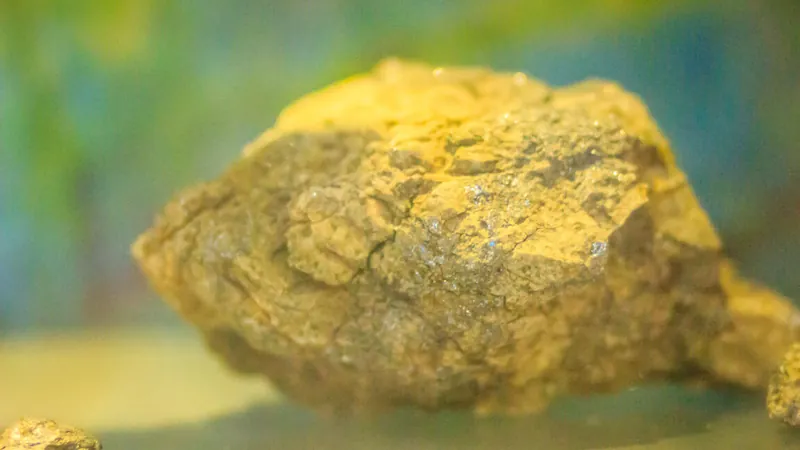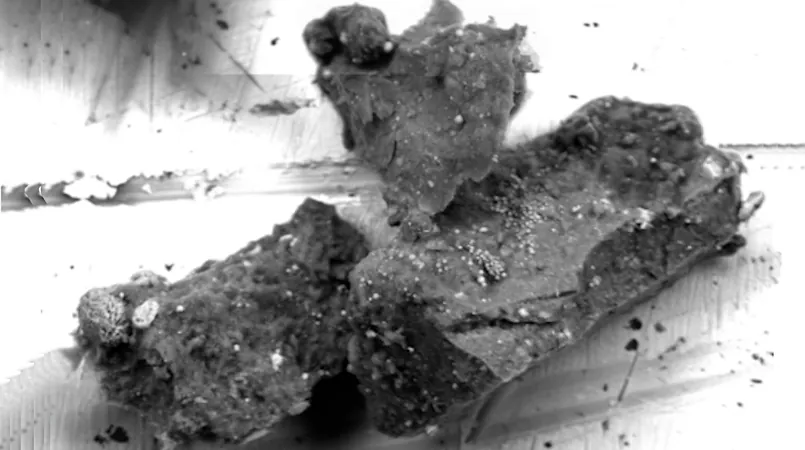
Breaking New Ground: 3D Chips with 2D Materials Promise a Silicon-Free Future!
2025-01-02
Author: John Tan
Breaking New Ground: 3D Chips with 2D Materials Promise a Silicon-Free Future!
As silicon chip manufacturers like Intel and TSMC strive to shrink features to atomic scales, they are approaching the limits of silicon's capabilities. Dr. Ki Seok Kim from MIT’s Research Laboratory of Electronics highlights this pressing issue: “We already have very, very high density in silicon-based architectures where silicon performance degrades sharply.”
But there's hope on the horizon. Researchers are turning their attention to graphene-like 2D materials, known for maintaining semiconducting properties even at sizes as small as a single atom. This innovation could lead to the next generation of computing devices, and Kim's team has achieved a significant breakthrough by creating a 3D chip made up of vertically stacked 2D semiconductors.
Why 2D Materials Matter
Graphene is the most famous of these materials, known for its exceptional strength and conductivity, but it doesn't serve as a semiconductor. Fortunately, other 2D materials like molybdenum disulfide and tungsten diselenide belong to a class known as transition metal dichalcogenides (TMDs), which do at least double duty, exhibiting superb electrical stability even below one nanometer.
However, these TMDs are traditionally deposited at scorching temperatures (around 900 degrees Celsius), which is incompatible with standard silicon fabrication methods. If manufacturers tried to add these materials directly onto existing silicon circuitry, they risked damaging delicate connections due to the extreme heat.
The Solution: Geometric Confinement
Enter Kim's pioneering technique known as "geometric confinement." Inspired by metallurgy, this method controls how TMDs crystallize, allowing them to be deposited at much lower temperatures—below 400 degrees Celsius—while ensuring that single-crystal structures are formed.
The process begins with a silicon wafer, which is coated with hafnium oxide, followed by a polymer coating shaped into specially designed trenches. By depositing tungsten diselenide vapor onto this structure at 485 degrees Celsius, the researchers facilitated nucleation events at the edges of the trenches, leading to singular crystalline structures that filled the spaces uniformly.
This revolutionary technique paves the way for creating multiple stacked layers of TMD transistors with remarkable electrical performance, mirroring results typically achieved only in much hotter environments. With the team’s latest achievement, they demonstrated a vertically stacked CMOS configuration made with novel single-crystalline TMDs, a significant feat for the industry.
The Road Ahead: Challenges and Solutions
Despite the excitement, significant hurdles remain. Currently, connecting TMD semiconductors with other components poses challenges. Today’s chips achieve this connectivity through a process called doping—injecting silicon with impurities to enhance conductivity. However, this approach presents difficulties when dealing with materials that are just one atom thick.
Moreover, controlling the cooling of densely packed 3D chips is crucial. As more transistor layers are added, heat dissipation becomes increasingly complex. "A heat sink area is needed in devices like that. This is also something we plan to do in the future,” explains Kim.
The Future is Bright for AI and Beyond
Nevertheless, Kim believes these challenges are surmountable. The transition to 3D stacked chips using 2D semiconductors has the potential to substantially enhance performance while significantly reducing power consumption—an essential step for powering the future of artificial intelligence and next-generation technologies. “We will achieve very, very high-density AI chips,” says Kim, indicating that we are just beginning to scratch the surface of what is possible.
With a growing emphasis on 2D materials in chip-making, we could soon witness a paradigm shift in technology—leaving traditional silicon behind and ushering in a new era of computing capabilities. Keep an eye on this space, as the future of 3D chips may be right around the corner!



 Brasil (PT)
Brasil (PT)
 Canada (EN)
Canada (EN)
 Chile (ES)
Chile (ES)
 Česko (CS)
Česko (CS)
 대한민국 (KO)
대한민국 (KO)
 España (ES)
España (ES)
 France (FR)
France (FR)
 Hong Kong (EN)
Hong Kong (EN)
 Italia (IT)
Italia (IT)
 日本 (JA)
日本 (JA)
 Magyarország (HU)
Magyarország (HU)
 Norge (NO)
Norge (NO)
 Polska (PL)
Polska (PL)
 Schweiz (DE)
Schweiz (DE)
 Singapore (EN)
Singapore (EN)
 Sverige (SV)
Sverige (SV)
 Suomi (FI)
Suomi (FI)
 Türkiye (TR)
Türkiye (TR)
 الإمارات العربية المتحدة (AR)
الإمارات العربية المتحدة (AR)